Cover Story
Rising Stars
The future looks bright for the field of psychological science. The Observer presents the 2013 class of movers and shakers who are propelling science into new directions. This is the first of a multi-part series, so you can look forward to more stars.
Dani Bassett
Lisamarie Bensman
Kasia M. Bieszczad
Ryan Bogdan
Emily Falk
Chad E. Forbes
David Frederick
Joshua Jackson
Kristiina Kompus
Michael W. Kraus
Bernhard Leidner
Tiago V. Maia
Esha Massand
Robin Nusslock
In-Sue Oh
Nicholas Scurich
Nikolaus Steinbeis
Virginia Sturm
Marcela Tenorio D.
Nicholas Turk-Browne
 Dani Bassett
Dani Bassett
University of California, Santa Barbara
www.danisbassett.com
What does your research focus on?
My research focuses on the very basic issue of understanding how the interactions between a system’s components constrain and enable that system’s dynamics. The human brain is a very complex system for which this question is particularly fascinating and has pervasive ramifications for the human condition. Non-invasive neuroimaging techniques have enabled us to map the large-scale structural connectivity throughout the entire human brain, as well as the functional connectivity between large-scale brain areas over both slow functional magnetic resonance imaging and fast electroencephalography/magnetoencephalography time scales of brain activity. My research focuses on understanding both structural and functional connectivity using new tools from network science. The complementary goals are furthering a basic understanding of how the brain works and providing support for novel clinical interventions in neuropsychiatric disease.
What drew you to this line of research and why is it exciting to you?
I was originally drawn to this line of research by the hope that in understanding the brain’s network of interconnections, we could unlock an entirely new set of solutions for disease diagnosis, treatment development, and intervention monitoring. I was also excited by the possibility that my formal training in physics and math could help me to make direct contributions to human health and general quality of life.
Who were/are your mentors or scientific influences?
My greatest mentor is hands-down my twin brother. Currently pursuing a PhD in philosophy, he is constantly inspiring me to identify creative links between disparate branches of science to facilitate pragmatic ends in mental health. Of course I have also been influenced by a host of other scientists in physics, math, psychology, and neuroscience both past and present. I can look back on interactions with many individuals that spanned anywhere from several hours to several years as indelibly altering my trajectory in science. Of these influences, I think particularly fondly of my time in Cambridge, England, working with seminal systems neuroscientist and psychiatrist Ed Bullmore.
What’s your future research agenda?
The majority of my current projects are focused on understanding how brain connectivity changes — over time scales of seconds to years — and how those changes can serve as signatures of healthy or diseased cognitive function either at rest or during goal-directed behaviors. There is an incredible wealth of information in brain dynamics that we have barely even begun to tap. Recent analysis methods from physics and mathematics, including tools from network science, have provided novel ways of characterizing these dynamics that promise to lead to critical new insights in basic cognition and neuropsychiatric disease.
What publication are you most proud of?
Bassett, D. S., Wymbs, N., Porter, M. A., Mucha, P., Carlson, J. M., & Grafton, S.T. (2011). Dynamic reconfiguration of human brain networks during learning. PNAS, 108, 7641–7646.
This is a paper in which I did what I love most about science. I identified a new mathematical technique that could be used to address a critical question in psychological science. It was the culmination of several years of thought, and has spawned a host of other research questions that I am just beginning to tackle now. Return to top.
Lisamarie Bensman
Hilbert College
What does your research focus on?
My research focuses on sexual behavior, particularly orgasms. I examine the subjective aspects of these situations. How do individuals perceive their orgasm experiences and why? I am currently exploring the role of context in said perceptions. Orgasm experiences appear to be more satisfying when they occur in the partnered context (i.e., from sexual activity with another person) than in the solitary context (i.e., self-masturbation). Individuals report these partnered orgasms to be both physically and psychological more intense and enjoyable. Going forward, I will explore what about the partnered sexual experience leads to these higher subjective assessments.
What drew you to this line of research and why is it exciting to you?
Human sexuality is such a fundamental part of the human experience — we wouldn’t exist without it — yet our knowledge on the topic is extremely limited. It wasn’t even considered a worthwhile area for scientific endeavor until the last half of the 20th century (and the idea that it is an inappropriate avenue for research still has not been dispelled amongst all — even in academia). Even in the field of sex research itself, there’s a focus on problematic sexuality, be it sexual violence or the spread of sexually transmitted illnesses. I, myself, even began my graduate education by studying sexual violence. While I still consider sexual violence an important line of research, I now choose to examine more normative and positive sexual experiences. There’s just so much misinformation out there about what is “normal” in regards to sex. People worry that their feelings, fantasies, and behaviors are “wrong” and “unusual,” when in all likelihood, they’re benign and common. I think that the more information that we as scientists can disseminate, the more fears we can ease and the better people’s lives can be.
Who were/are your mentors or scientific influences?
As a PhD student, I had the remarkable opportunity to work under Elaine Hatfield. In addition to being a pioneer in many areas of social psychology and human sexuality, she has the brightest mind for research methodology of anyone I’ve ever met. I cannot say enough about how much I learned working with her. She has a knack for getting right to the heart of whatever research issues her students are trying to tackle, and in doing so, greatly improves the quality of these studies. Even though she’s quick with the suggestions, she also gives her students the final say on their work, thus giving room to make mistakes and to learn from said errors. As much as I learned about research from her, I learned even more about what example I want to set for my own mentees.
What’s your future research agenda?
I plan to expand my research in two directions. First, I intend for my future research to include more individuals of sexual and gender minorities. Members of LGBTQ community are rarely included in studies of orgasm experiences and this exclusion, while likely unintentional, nonetheless does a disservice to all. We can’t disseminate accurate information on normative sexual development and experiences if we aren’t studying the experiences of substantial groups of people. Second, I will be expanding my research on orgasm experiences to include a cultural component. I will examine if the perceptions of orgasm experiences differ by culture, and if so, why they differ.
What publication are you most proud of?
Tang, N., Bensman, L., & Hatfield, E. (2012). The impact of culture and gender on sexual motives: Differences among Chinese and Americans. International Journal of Intercultural Relations, 36, 286–294.
It might seem like an odd choice to select an article that I’m not the primary author on, especially after learning that I didn’t design or execute the study. Nonetheless, I’ve selected this article because it was quite a challenge and helped me to define at least part of my identity as a researcher. I came onto this project late, having been asked to step in and see some excellent data from a well-designed study through to publication. It was a new role for me as problem solver and the first time I took the lead in and had the final say on data analysis and interpretation. As difficult as working with someone else’s data can be, I found the challenge very exciting and rewarding. Return to top.
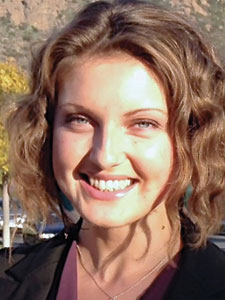
Kasia M. Bieszczad
University of California, Irvine
sites.uci.edu/kasiamb/
What does your research focus on?
My primary research interests are in the neurobiology of learning and memory, with a particular focus on the neurobiological processes of information storage in the cerebral cortex. A critical issue in behavioral neuroscience is to find neural substrates that comprise the details of experience that form a memory. We all can identify with the notion that memories have content — they are about something. Yet the field has an incomplete understanding of how the details of “what memories are about” are actually represented in the brain. Therefore, it is also unknown what has happened when memories are lost, as in dementia or in various brain diseases.
My work addresses the issue of neural substrates for the content of memory using a simple auditory model of learning and remembering. It is born in some ways from the famous work of Ivan Pavlov, which showed how animals (just like humans) can associate a particular sound with a forthcoming reward (like dogs hearing bells for food). Such associative learning undoubtedly makes that sound important to the animal. So how does the neural representation of sound signify that particular sound as one that is behaviorally relevant? In other words, where and how is the auditory content of that associative memory represented in the brain?
To answer this question, one must consider what I believe to be the most important and exciting property of neural tissue like the cerebral cortex. That is, its remarkable capacity to change itself as one learns and experiences new things: The brain is plastic. It has turned out over several decades of neurobiological research that plasticity is a fundamental property of neural function that persists from childhood, to adulthood, and throughout a lifetime. At the same time there have been discoveries about areas of the brain that used to be labeled “sensory cortex” in textbooks — that is, scientists thought they had the the strict roles of analyzing the identities of incoming sensory inputs from our eyes, ears, etc. Findings showed that such areas are actually also critical participants in learning and remembering what we see, hear, and so on. For example, right there in primary auditory cortical neurons is plasticity that changes their receptive fields for sound when an adult animal learns that one sound is significant.
My research has built upon foundational work in the primary auditory cortex and auditory learning. We have shown that when animals learn and remember that a sound predicts a reward, auditory representational plasticity occurs in the primary auditory cortex to recruit more neurons for the representation of the behaviorally-significant sound. Memory depends on the reorganization of the representation of sound across neurons in the primary auditory cortex. Moreover, we find that the more cells that are recruited, the stronger the animal’s memory is for that sound. Just imagine then what the neural representation of the sound of your name might be like in your own brain — it is probably being represented in lots of neurons, and will probably be really difficult to ever forget.
What drew you to this line of research and why is it exciting to you?
Musical experience from childhood piano lessons and my training as a classical pianist were likely seeds of a passionate curiosity for the workings of auditory memory and the human brain. That, and I was raised by parents who were both computer scientists. That might seem like an odd reason until I tell you that my father had books everywhere about the human brain and its capacity for dynamic neural networks. These books sat on the shelves of our house in my plain sight and also (probably purposely) within my grasp while he was in the midst of developing his own research in the (then) young field of artificial intelligence. Another influence from my father? His steadfast voice reminding me as I whined with frustration about a new piece of music that my hands could not yet glide through: Remember, Kasia: Practice makes perfect. Practice makes perfect. But why did “practice make perfect”? And how could it be, as I’d read in those books, that a man could forget how to speak without forgetting how to sing?
I have been lucky enough to pursue the ideas I marveled about during childhood with empirical methods founded in biology and neuroscience. The laboratory structure allows a targeted inquiry into the mechanisms of how learning changes neural organization and behavioral function.
This work has all been incredibly exciting, especially because of the endless evidence that the adult brain is so plastic. The more we learn about adult neural plasticity (e.g., the circumstances in which it occurs, how exactly it reorganizes the cortex, and the consequences that neural remodeling has on subsequent behavior) the more this kind of basic science will have direct relevance to and an impact on the clinic. For example, behavioral therapeutic strategies that can alleviate or delay memory deficits that occur as a result of brain dysfunction or disease could be developed with targeted learning paradigms for which we have identified predictable outcomes of neural remodeling. It is my hope that we might one day gain enough of an understanding of the underlying plasticity that produces successful learning and remembering to delay or even treat conditions as devastating as the memory-loss that can occur after a stroke or with Alzheimer’s.
Who were/are your mentors or scientific influences?
The foundation of my career in neuroscience was formed while I was an undergraduate biology major at McGill University in Montreal, Canada. There is a strong neurobiological tradition on campus that permeates the prominent greystone psychology and biology buildings atop the hill on Docteur Penfield Avenue (yes, as in Dr. Wilder Penfield) and in the Montreal Neurological Institute down the road. It stirred the future research scientist in me to know that Penfield, as well as Donald Hebb, Brenda Milner, and those that followed them, made their discoveries while walking those same halls — and dealing with the same icy winters.
I was first introduced to laboratory research while at McGill, where I was remarkably lucky to link my music and neuroscience interests working with Daniel Levitin in his Laboratory for Music Perception, Cognition and Expertise. It was my first glimpse of a working research lab, of how collaborative efforts produce new ideas for experiments and clever ways to conduct them. I also saw first-hand how every lab member was invaluable to the laboratory’s overall function, and that we operated best as a family of sorts. Countless times, Dan stepped in to remind me never to give up, and showed me the routes I could take to achieve my goals and pursue my interests.
Those interests in the neurobiological substrates of auditory perception and cognition led me to Norman Weinberger in the Center for the Neurobiology of Learning and Memory at the University of California, Irvine and its Department of Neurobiology and Behavior. Without a doubt, Norm has been one of the most influential of my mentors in neuroscience. My most valued scientific lesson from Norm? Identify your assumptions. One may hold assumptions that are deeply engrained, and while sometimes difficult to detect, their discovery is essential for the ultimate discovery of truth. This simple rule helps in writing, giving lectures, preparing scientific talks, and designing a research program. Once you realize that you hold your own deep assumptions, it helps you understand your audience(s), your students, your colleagues, and even your reviewers.
I would also not be the research scientist I am today were it not for the Center for the Neurobiology of Learning and Memory and its staff at UC Irvine. The Center’s faculty and laboratories are organized so that next door and down the hall are scientists who share common questions but at various levels of investigation. It is undoubtedly due to my experience there and conversations with the people there that I realized it was feasible to form a future research program that would address the mechanisms of learning and remembering that span the behavioral, neural, molecular, and genetic levels. This echoes again the power of collaborative research, the importance of hearty discussion at scientific meetings, and the value of a collegial family of scientists working towards the same goal to discover truths about the nature of the brain. I am especially thankful to my postdoctoral advisors, Jim McGaugh and Marcelo Wood, from whom I have also learned that it is possible to balance a love for life with a love for science.
What’s your future research agenda?
The discovery that representational plasticity in the sensory cortex is a potential mechanism for the strength of the content of memory might explain why some memories are lost (e.g., if the lack of induction of appropriate forms of plasticity after learning contribute to disease- and injury-related dementias or specific memory loss). However, it also has implications for understanding why some memories are especially intrusive. For example, too great an induction of plasticity that recruits cells to a particular sensory cue may contribute to post-traumatic stress disorder (PTSD) by increasing the potency of specific signals that trigger flashbacks and stress responses. Likewise, cortically over-represented cues could be a neural basis for the likelihood of cue-initiated relapse into drug-seeking behaviors in disorders of addiction. Both of these situations are conditions in which memory detail is exceptionally strong.
A new line of my research I have started with Marcelo Wood at UC Irvine has been to determine whether the formation of particularly strong memories involves potent epigenetic mechanisms that promote plasticity in the primary auditory cortex. In recent years, epigenetics has become a major factor in the field of behavioral neuroscience. While there is strong evidence that epigenetic mechanisms control a developmental form of plasticity that establishes cortical organization, they also appear to have an independent and powerful role in post-mitotic differentiated cells in the adult brain. Epigenetic control of the expression of genes — which is required for experience-dependent plasticity — enables incredibly robust changes in neuronal identity, function, structure, connectivity, and ultimately animal behavior. It will be exciting to see whether the auditory model of learning, memory, and cortical plasticity, in conjunction with epigenetic control can provide a targeted approach to address mechanisms for robust and persistent content in memory. The future may reveal the utility of pharmacological manipulations of epigenetic control on specific behaviors, or even the reversal of enduring disorders of pathologically strong memory, which could extend our understanding of other dimensions of learning, memory, or, ultimately, any specific stimulus-driven behavior.
What publication are you most proud of?
Bieszczad, K. M. & Weinberger, N. M. (2012). Extinction reveals that primary sensory cortex predicts reinforcement outcome. European Journal of Neuroscience, 35, 598–613.
This paper incorporates some of the principles of sensory cortical plasticity that were discovered in the course of my graduate work — it shows the utility of combining questions regarding “factors” of auditory cortical plasticity (i.e., what psychological factors drive the formation of plasticity?) and its “functions” (i.e., what are the behavioral outcomes after having developed plasticity?). This framework led to the discovery a potential neural mechanism for the basic learning effect of behavioral extinction, behavioral recovery after extinction, and even a plausible mechanism for Pavlov’s “below-zero” extinction phenomenon. Most importantly, that these mechanisms were found in a “sensory” area emphasizes how the entire cortex might act in concert to support learning, memory, and cognition.
There is another set of papers in the pipeline that I am excited to have come out this year — these are particularly exciting because we have used brain stimulation techniques to approach causal accounts of a primary cortical role for learning and memory. That is …to be continued. Return to top.
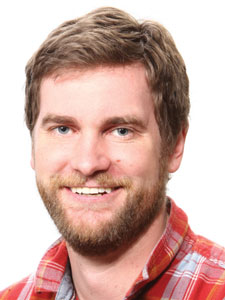 Ryan Bogdan
Ryan Bogdan
Washington University in St. Louis
psychweb.wustl.edu/people/ryan-bogdan
What does your research focus on?
My research investigates how genetic variation and environmental experience contribute to individual differences in brain function, behavior, and psychopathology. I am particularly interested in understanding how individual differences in reward and threat processing, as well as stress responsiveness, emerge and play a role in the development of depression and anxiety. The larger goal of my research is to contribute to our etiologic understanding of depression and anxiety.
What drew you to this line of research and why is it exciting to you?
I came to the research by accident after a wrist injury prevented me from continuing my career path as a percussionist. After moving from a music school to a traditional college (Santa Clara University), I took obligatory courses, happened upon a psychology and neuroscience course, and became fascinated with variability in behavior, psychopathology, and its biologic basis. Learning that subtle and common differences in DNA sequence could have profound effects on neural circuits and related behaviors was exciting, and its applicability to understanding risk for psychopathology was readily apparent. In conjunction, insights into how experience gets under the skin to shape biology (e.g., long-term potentiation, epigenetic regulation) provided plausible mechanisms through which the environment could influence behavior and contribute to psychopathology. The importance of this research is amplified by our relatively poor etiologic understanding of psychopathology and treatment to date. At the end of the day, this research is exciting to me because I believe that, in years to come, it may help us to better understand psychopathology on a level that will inform more effective treatment and prevention strategies. More broadly, I have found a career in science to be incredibly rewarding. Learning new things and working collaboratively with passionate people is one of its best perks.
Who were/are your mentors or scientific influences?
I have been fortunate to have many excellent mentors from various aspects of my life. My parents, Mark and Marina Bogdan, as well as my uncle Bill Henrichs, instilled in me a love of hard work and a sense of pride in a job well done. Within the field, Ian Gotlib at Stanford University and Thomas Plante and Eleanor Williamson at Santa Clara University, provided me with the basic skills, training, experience, and opportunity to conduct research as an undergraduate. During graduate school, Roy Perlis at Massachusetts General Hospital/Harvard Medical School opened the world of genetics to me by providing basic bench training and resources within his laboratory. My graduate school mentor, Diego Pizzagalli (Harvard University), and postdoctoral mentor, Ahmad Hariri (Duke University), have had the most profound impact on my professional development. I am extremely grateful to Diego for his support and training, and in particular his methodological rigor. I continue to appreciate his innovative approach to science and hope to instill that in my trainees. Ahmad provided an integration of my prior training with modern neurogenetic methods. I greatly admire his enthusiastic approach to science and openness to collaboration. He is supportive, innovative, open, and fun, while being generous with data, feedback, and his knowledge and time.
What’s your future research agenda?
We continue to investigate factors that influence risk for psychopathology and the origins of individual differences. Presently, we are working on beginning double-blind, placebo-controlled pharmacologic challenge studies that will allow for targeted experimental manipulations of neural systems.
What publication are you most proud of?
Bogdan, R., & Pizzagalli, D. A. (2006). Acute stress reduces reward responsiveness: Implications for depression. Biological Psychiatry, 60, 1147–1154.
I am most proud of my first publication in graduate school because Diego Pizzagalli and I designed the study from the ground up after reviewing literature together. This was the first time I was involved in all aspects of an experiment from conceptualization and extensive pilot-testing to running subjects, analyzing the data, and writing the manuscript. Despite not being within the scope of my current research methodologies (e.g., genetics and neuroimaging), it nicely exemplifies my philosophy regarding research, which should ultimately aim to reveal mechanisms underlying psychopathology. Return to top.
 Emily Falk
Emily Falk
University of Michigan
cn.isr.umich.edu
What does your research focus on?
What makes ideas successful in persuading individuals and in affecting larger populations? Sometimes we don’t even realize that an idea has embedded itself in our mind and is influencing our behavior. In my lab, we use tools from social psychology, communication studies, and neuroscience to understand social influence and successful communication more broadly. At present, much of our research focuses on health communication, and topics relevant to the design of better interventions, programs, and policies. For example, our lab links neural activity (e.g., in response to health messages) to behaviors in the real world (e.g., health behavior change). We find that such neural activity can predict later behavior change over and above participants’ own self-reports of how they responded to the messages.
We have also found that neural activity in one group of participants in response to certain stimuli (e.g., to anti-smoking ads) can predict behavioral responses in completely different groups of participants at the population level (e.g., calls to a quit-smoking hotline). We are also interested in why some ideas are catchier than others. Successful ideas can spread quickly through social networks and into the larger culture, yet researchers have had difficulty isolating features that predict the popularity of ideas. Our work examines neural activity in targeted brain areas to predict both the persuasiveness, and the catchiness, of ideas, as well as other dimensions of success. Our recent work also extends to how the neural bases of influence may change or remain stable across development, and how simple interventions (e.g., self-affirmation) impact processing of persuasive messages.
What drew you to this line of research and why is it exciting to you?
I was drawn to this line of research because I’m interested in ways of making people healthier and happier. Following an undergraduate degree in neuroscience and a Fulbright Fellowship in health policy, I wondered whether neuroscience methods might be able to give us new leverage on a problem that is really challenging — understanding and predicting behavior change. The work is exciting to me from a basic science standpoint because it addresses fundamental questions about why people are influenced in some situations and not others, and why some messages are more persuasive than others. Brain activity helps us understand and predict responses to different forms of social influence that are difficult to predict otherwise. It is exciting to me from an applied standpoint because we are getting traction on a meaningful, real-world, problem; modifiable health behaviors, including poor diet, physical inactivity, and tobacco and alcohol consumption in adults, and risk-taking in the presence of peers in teens, are leading causes of morbidity and mortality. Interventions that improve these behaviors are critical. By combining tools from neuroscience, social psychology, and communication science we can get a clearer picture of the mechanisms that make people more or less open to change, which ultimately leads to the design and selection of better interventions.
Who were/are your mentors or scientific influences?
My research builds on foundational work in social psychology, cognitive neuroscience, public health, and communication science. As such, researchers from across these disciplines have influenced my thinking. In particular, I am especially inspired by the early social psychologists who chose scientific problems based on real-world problems they observed and wanted to help mitigate. In addition, the direct mentorship I have received at each stage of my career has been phenomenal. Most centrally, Matthew Lieberman was my doctoral adviser and continues to be a fantastic mentor, collaborator, and role model. My early research agenda was also influenced by faculty in health psychology, cognitive psychology, and public health at UCLA. At Michigan, I have continued to receive phenomenal mentorship from colleagues across disciplines, as well as inspiration and instrumental support from a core group of researchers within the Research Center for Group Dynamics. Finally, my students (http://cn.isr.umich.edu/people.html) have become a central force in developing the lab’s research agenda.
What’s your future research agenda?
Our lab is continuing to explore what makes ideas successful in persuading individuals and in affecting different larger populations. Building on this basic idea, we are expanding our focus in a few key areas:
- Population-level media effects — In recent work (Falk, Berkman & Lieberman, 2012, Psychological Science), we went beyond prediction of individual behavior change to examine neural predictors of the success of health messages in larger populations (effects of health campaigns within larger media markets). Our lab is now collaborating with a number of public health organizations to conceptually replicate these findings with a broader range of health messages, in diverse populations, and to more precisely pin down the psychological mechanisms responsible for message success and failure.
- The Spread of Ideas — Other recent work (Falk et al, in press, Psychological Science; Falk et al, in press, Frontiers in Neuroscience) examines neural processes involved in the successful spread of ideas from person to person. We are now building on these studies to predict virality in different contexts and to test theories about the successful spread of ideas more broadly.
- Peer influence in adolescence — Adolescence is a developmental period in which we are particularly susceptible to social influence and to ideas from peers. In new work (in collaboration with The University of Michigan Transportation Research Institute and NICHD) we have begun to explore neural predictors of receptivity and resistance to peer influence in adolescence, with a focus on health-relevant behaviors. We are also particularly interested in how the basic neural mechanisms of social influence change across development.
What publication are you most proud of?
The first paper in which we demonstrated that neural activity could predict longitudinal health behavior change gave us confidence to pursue the program of research I’ve described above:
Falk, E. B., Berkman, E., Mann, T., Harrison, B., & Lieberman, M.D. (2010). Predicting persuasion-induced behavior change from the brain. Journal of Neuroscience, 30, 8421–8424.
The basic finding is that activity in the medial prefrontal cortex in response to persuasive messages predicts important behavior changes following message exposure. I am proud of this paper because the basic finding replicates across different types of health behaviors, different contexts and situations, different levels of analysis (e.g., individual versus vs. population-level effects), and in the hands of different labs. Return to top.
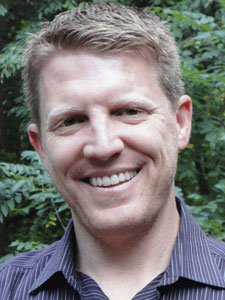 Chad E. Forbes
Chad E. Forbes
University of Delaware
https://sites.google.com/site/chadeforbes/
What does your research focus on?
As a social neuroscientist, my research utilizes cognitive neuroscience methodologies such as electroencephalography (EEG), functional magnetic resonance imaging (fMRI), and traumatic brain injury (TBI) studies to investigate how different contexts affect the way we attend to and interpret information. My research program revolves around two primary topics:
1) How negatively stereotyped targets’ (e.g., women in math or ethnic minorities in academics) motivation, attention, and memory are affected by situations that prime negative group relevant stereotypes both in the moment and over time.
2) How factors such as contextual primes or genetic predispositions undermine a person’s ability to perceive novel, negatively stereotyped outgroup members in a non-biased manner. My approach to these topics applies an overarching theme that examines how these processes are influenced by interactions between implicit (i.e., fast) and explicit (i.e., slow) cognitive processes and the neurophysiological interactions between subcortical and prefrontal cortical networks that are integral to implicit and explicit processing in general.
What drew you to this line of research and why is it exciting to you?
I grew up in a very diverse neighborhood, with friends from all walks of life, and am a first-generation college student who has a track record of performing poorly on standardized tests. So entering college, I had a lot of data points suggesting that people were people, and things other than natural intelligence may affect performance in classroom settings; but also a lot of cultural evidence suggesting otherwise. At the same time, I’ve always had an inherent interest in biology and neuroscience (it was one of the only things that would keep me awake in high school). Some of my fondest college memories are of times spent studying for my molecular biology and mammalian physiology courses and volunteering in a genetics laboratory (and yes, I know how sad that may sound to some). But once I took my first courses in social psychology, cognitive psychology, and biopsychology, I knew things would never be the same. My whole worldview made sense and was imbued with meaning. The field of social neuroscience is so exciting to me because it provides a framework for the union of my two passions and a means to tackle critical social questions with the interdisciplinary approach they require. We are identifying the basic biological components that influence and inform the most complex of social processes. How can you not get excited about that?
Who were/are your mentors or scientific influences?
I have been extremely fortunate to have some wonderful academic mentors and influences in my life. My graduate adviser, Toni Schmader, spent so much time helping me hone my research acumen, writing and presentation skills, etc., that it’s surprising she can still stand the sight of me or sound of my voice. As I get my lab up and running and deal with my own graduate students, I find myself uttering the phrase WWTD (What Would Toni Do) on pretty much a daily basis. My postdoctoral adviser, Jordan Grafman, had a major influence on how I think about principles of cognitive neuroscience, neural function, and hierarchical neural processing. I have John J.B. Allen to thank for teaching me everything I know about basic EEG methodologies, and Michael X. Cohen to thank for pushing that understanding to the next level. And I wouldn’t have become interested in the theory of stereotype threat in the first place if it wasn’t for my terminal master’s adviser, Avi Ben-Zeev. Once again I find myself in an extremely fortunate situation working as an assistant professor at the University of Delaware. At UD I receive guidance and inspiration from the likes of Sam Gaertner, Mike Kuhlman, Bob Simons, and Greg Miller on a daily basis. Finally, I carry around György Buzsáki’s book Rhythms of the Brain like it was my lone, yet all-satisfying, source of spiritual guidance.
What’s your future research agenda?
My future research agenda will tackle the utterly vexing question of why minorities in academics, or women in STEM fields, who are initially the most identified with their respective domains, are often the most likely to leave that domain. Specific to perceivers, we’re examining ways to track, and ultimately increase, the evolution of trust between two ethnic outgroup members. We’re also identifying ways to promote encoding of different types of information associated with outgroups in hopes of both decreasing bias and facilitating more accurate predictions of how outgroup members might behave. An overarching question embedded within all these future research questions is how genes (specifically SNPs that influence neural plasticity) and context alter the dynamic, neurophysiological interactions between neural regions (e.g., coherence and phase locking within different frequency bands between different regions) deemed integral for person perception, emotion, and executive function. The big prize of course is to identify which of these neural patterns in turn predict individuals’ behavior in the aforementioned processes.
What publication are you most proud of?
Forbes, C. E., Poore, J. C., Barbey, A. K., Krueger, F., Solomon, J., Lipsky, R. H., Hodgkinson, C. A., Goldman, D. & Grafman, J. (2012). BDNF polymorphism-dependent OFC and DLPFC plasticity differentially moderates implicit and explicit bias. Cerebral Cortex, 22, 2602–2609.
My colleagues and I were interested in understanding the role of different prefrontal cortical (PFC) brain regions in the regulation and expression of implicit and explicit social bias. We were also interested in how different genetic single nucleotide polymorphisms (SNPs) involved in the modulation of neuroplasticity between and within neural regions may alter this relationship. We examined these questions in an extremely rare sample of patients with varied PFC lesion sizes and SNPs in the brain-derived neurotrophic factor (BDNF) gene, which promotes (methionine–valine [Met/Val] SNP) or stifles (valine–valine [Val/Val] SNP) plasticity in damaged PFC regions (i.e., they either had more or less of different PFC regions intact and a SNP that either promoted neural plasticity within these regions or suppressed it).
We found that patients with Met/Val SNPs exhibited less implicit bias when they had smaller orbitofrontal cortex (OFC) lesions compared with Val/Val patients with similar size lesions and those with large OFC lesions. Patients with Met/Val SNPs also exhibited less explicit bias when they had smaller dorsolateral prefrontal cortex (DLPFC) lesion sizes compared with Val/Val patients with similar size lesions and those with large DLPFC lesions. These findings are extremely provocative, providing direct evidence for the role of OFC and DLPFC in the expression of implicit and explicit bias, as well as some of the first evidence that plasticity within these PFC regions modulates the type and degree of social bias. These findings fuel a lot of my current research interests. Return to top.
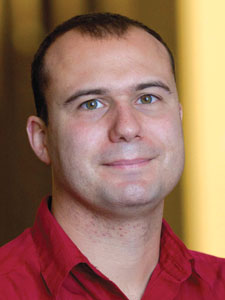 David Frederick
David Frederick
Chapman University
sites.google.com/site/davidfrederickpsychology/
What does your research focus on?
I am fascinated by the tremendous variation in sexuality that is observed across the world, across historical time, within each sex, and even within a given individual over time. My work is part of a broader interdisciplinary attempt to understand the ways that evolved physiological and psychological systems interact with social influences to shape behavior and preferences. My research examines questions such as: How did evolutionary processes shape the human body and mind? How have shifting gender roles changed the nature of romantic relationships?
What drew you to this line of research and why is it exciting to you?
My original dream was to become a researcher chasing monkeys across Africa. I was intrigued by the differing patterns of male-female relationships across different primate species, and how these patterns were tied to both the evolutionary history of the given species as well as the current ecological circumstances. Ultimately I was drawn to the study of evolutionary perspectives on the mind, behavior, and sexuality. This is a particularly engaging time to conduct this work. Although approaches that integrate evolutionary approaches have gained a foothold in psychology, there is still a great deal of controversy regarding these perspectives, and it is exciting to add to this growing area by integrating perspectives from biology, psychology, anthropology, and women’s studies.
Who were/are your mentors or scientific influences?
Two feminist primatologists, Sarah Hrdy and Linda Marie Fedigan, captured my attention with their fascinating books on primate social behavior and their critical analyses of assumptions about gender and behavior in primates (The Woman that Never Evolved and Primate Paradigms). As an undergraduate, Gordon Gallup and Steven Platek played a big role in shaping my interest in evolutionary perspectives on sexuality. As a graduate student, I was fortunate to have two exceptional mentors at UCLA in Anne Peplau and Martie Haselton, who dedicated a tremendous amount of time to helping me learn how to write effectively and develop research studies testing an overarching theory. Forging collaborations with anthropologists (Dan Fessler, Clark Barrett), sociologists (Janet Lever, Abigail Saguy), and psychologists (Viren Swami, Gordon Forbes, Janet Latner, Elaine Hatfield) provided an exciting opportunity to learn a variety of methods and theoretical perspectives and to develop an interdisciplinary approach to research. Finally, I am indebted in particular to Neil Malamuth and Tara Scanlan for helping me develop my approach to teaching.
What’s your future research agenda?
One question that has recently captured my attention is why some gendered traditions have been more resistant to change despite the move towards gender equality across the past 50 years. For example, when it comes to choosing the family surname upon marriage or who pays for dates early in courtship, are people following traditional norms, egalitarian norms, or crafting some sort of compromise between the two? Second, along with Abigail Saguy, Kjerstin Gruys, and Traci Mann, I am examining how different narratives regarding medical perspectives on body weight in the news media impact attitudes towards fat men and women as well as obesity-related public policies.
What publication are you most proud of?
Swami, V., Frederick, D. A., Aavik, T., Alcalay, L., Allik, J., & Anderson, D., et al. (2010). The attractive female body weight and female body dissatisfaction in 26 countries across 10 world regions: Results of the International Body Project I. Personality and Social Psychology Bulletin, 36, 309–325.
When I entered graduate school, I didn’t want to fall into the trap of relying solely on the captive population of Western college students who serve as the main fodder for psychological research. But without much funding, the prospects of recruiting sizeable samples of free-ranging humans seemed limited. I made it my goal to find ways to gather these samples, first by partnering with NBC News to conduct surveys via their official website, and second by recruiting samples from collaborators with research sites across many societies. The publication I am most proud of was based on the International Body Project that Viren Swami and I co-organized, where we examined preferences for body types in 41 sites in 26 countries across 10 world regions. This study showed just how widespread thinness norm has become for women, with plumpness valued primarily in rural sites in non-industrialized countries. Return to top.
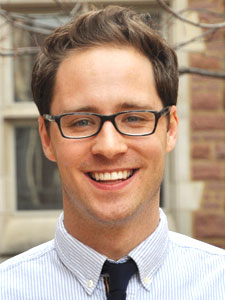 Joshua Jackson
Joshua Jackson
Washington University in St. Louis
http://pages.wustl.edu/personality
What does your research focus on?
My research is in the field of personality development. In general, I am interested in examining how personality changes across the lifespan and what experiences shape personality. To answer these research questions, it is important to identify the most effective ways to measure personality and personality change. Given this, a large amount of my work also examines different methods of assessing personality, as well as the structure of personality. Ultimately, I hope to identify the processes that lead to personality stability and personality change.
What drew you to this line of research and why is it exciting to you?
I have always been intrigued by people’s life stories — how a person got to where they are — and the type of choices they made that ended up impacting their future. I did not realize the connection until recently, but I read quite a few biographies when I was younger, which are basically explanations for how someone becomes who they became. For whatever reason, I was always attuned to individual differences among people rather than the commonalities.
Who were/are your mentors or scientific influences?
Although my career has only just begun, I have already had the privilege to work with a number of phenomenal researchers. When I was at the University of Wisconsin during my undergraduate years, Jeremy Biesanz introduced me to the scientific study of personality and instilled in me a great appreciation for quantitative methods, while Avshalom Caspi taught me a great deal about how to conduct meaningful research. At the University of Illinois, I learned so many things from Brent Roberts that I believe I owe him royalties every time I write a paper. Also at Illinois, Chris Fraley provided me with sage advice on all things coffee related (coffee is to research as breathing is to living). At Washington University, Simine Vazire and Tom Oltmanns keep me on my toes every day.
What’s your future research agenda?
I want to continue to better understand the factors that influence stability and change in personality. Part of this line of research involves flipping the causal arrow and examining how changes in personality may influence important life domains, such as one’s relationships and health.
What publication are you most proud of?
Jackson, J. J., Thoemmes, F., Jonkmann, K., Lüdtke, O., & Trautwien, U. (2012). Military training and personality trait development: Does the military make the man or does the man make the military? Psychological Science, 23, 270–277.
This paper is important to me for two reasons. First, it is one of the first studies to identify experiences associated with personality change while attempting to control for selection bias, which is a pervasive problem in most passive longitudinal studies. Second, the paper is the result of a wonderful summer that I spent at the University of Tuebingen in Germany. In addition to postcard memories, the paper represents a time in my training in which I learned a great deal in a short period of time. Return to top.
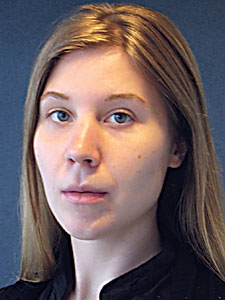 Kristiina Kompus
Kristiina Kompus
University of Bergen, Norway
www.uib.no/persons/Kristiina.Kompus
What does your research focus on?
Involuntary cognition, that is: complex mental acts which occur without volition or intention to perform them. For instance, involuntary retrieval of episodic memories, having a song “stuck” in your head, auditory hallucinations. Thus, such experiences range from benign features of everyday life to symptoms of psychiatric disorders, which is apparently determined by how much cognitive control you are able to exert over the experience once you become conscious of it. I am interested in how different systems (in cognitive and neural terms) interact to produce such experiences, and how they are related to perception of external stimuli.
What drew you to this line of research and why is it exciting to you?
At first, I thought that the only really interesting thing would be studying patients with executive dysfunctions, because that is when involuntary cognition and behavior are most salient. However, there is plenty of variation in the cognitive control abilities outside of the clinical spectrum, both between as well as within individuals. The challenging and most exciting part is modeling these cognitive events which, by definition, are subjectively unpredictable. How we could transfer such research outside of laboratory — for instance, helping people cope with unpleasant auditory hallucinations is of course very interesting.
Who were/are your mentors or scientific influences?
My undergraduate studies at University of Tartu (Estonia) influenced me a lot. The psychology department, with Jüri Allik at the helm, was notable for its uncompromising, almost fierce commitment to scientific rigor, both in lecture halls as well as in the arena of public debate. I learned a lot about the role and duties of a psychologist in society. To hear visiting Endel Tulving discuss memory systems gave me, quite understandably, a push towards trying to understand how cognitive systems interact. Lars Nyberg, who was my PhD supervisor, has an extraordinary knack for doing interdisciplinary research, identifying interesting research questions at the intersection of multiple fields. Kenneth Hugdahl, my postdoctoral mentor, has created a unique research environment which stimulates excellence, quite possibly because he never lets you forget the importance of keeping your eyes on the “big picture.”
What’s your future research agenda?
Figuring out what is the contribution of so-called spontaneous activation in auditory brain areas to auditory stimulus processing and auditory hallucinations.
What publication are you most proud of?
Kompus, K., Eichele, T., Hugdahl, K., and Nyberg, L. (2011). Multimodal imaging of incidental retrieval: The low route to memory. Journal of Cognitive Neuroscience, 23, 947–960.
This collaborative project had many challenges, from operationalizing the cognitive construct to the very technical aspects of relating the data from two brain imaging modalities to each other. It took hard work at all stages, which, I believe, paid off. Return to top.
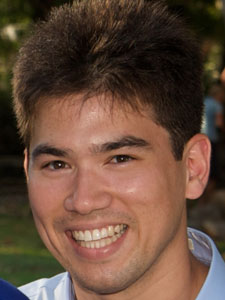 Michael W. Kraus
Michael W. Kraus
University of Illinois at Urbana—Champaign
www.krauslab.com
What does your research focus on?
I study a wide variety of topics that can be organized into a few specific themes. One major area of research focuses on how different aspects of social hierarchy (e.g., social class, power, respect) influence self-expressive or empathic processes. A second area of research investigates the social functions of emotions — in particular, how positive emotion expressions (e.g., smiles, touch) leak information about our core motivations. A third area of research is focused on how working models from past relationships influence the formation of new relationships.
What drew you to this line of research and why is it exciting to you?
Social status has always been fascinating to me. I grew up in a relatively small suburb with a clearly identifiable social hierarchy. As an undergraduate, I majored in sociology and fell in love with classic theories about social class. In general, it is hard not to get excited about a topic that is immensely important for defining the environments in which we develop, determining how long we live, and shaping social policy decisions (e.g., Should wealthier Americans carry a larger share of the US tax burden?).
Who were/are your mentors or scientific influences?
I’ve had some unbelievably fortunate mentoring relationships in my research career: Serena Chen and I have worked together for more than a decade, and I credit her with convincing me to pursue a career in research in the first place. Dacher Keltner achieved legendary status long ago, and his guidance has helped me focus on tackling big research questions, rather than getting bogged down in the details. Other colleagues (e.g., Cameron Anderson, Stéphane Côté, Wendy Mendes) have been extremely generous collaborators. I hope that their willingness to share their resources and expertise will make me a more generous researcher and mentor in the future.
What is your future research agenda?
We have a couple of very exciting projects in the works at the Champaign Social Interaction (CSI) laboratory. The first line of research examines how one’s social class background shapes political decisions. The second project involves assessing the physiological responses that enhance the attainment of status in face-to-face social groups. My lab is new and growing, and we’re very excited about our future research in these domains.
What publication are you most proud of?
Kraus, M. W., Piff, P. K., Mendoza-Denton, R., Rheinschmidt, M. L., & Keltner, D. (2012). Social class, solipsism, and contextualism: How the rich are different from the poor, Psychological Review, 119, 546–572.
The most important paper I’ve ever written has to be the article my colleagues at the University of California, Berkeley, and I published in Psychological Review last year. In the paper, we highlight how social class shapes basic psychological processes. I think that there are at least 30 testable hypotheses in the paper that I (and I hope others) will test in the coming years. I am happy to see that more psychologists are taking on social class as a research topic. Return to top.
 Bernhard Leidner
Bernhard Leidner
University of Massachusetts Amherst
http://people.umass.edu/bleidner/
What does your research focus on?
My research focuses on questions of morality and justice in the context of large-scale violence and conflict between groups. Why do people engage in destructive conflict? How do they justify it to others and themselves? How do their identities shape, and are shaped by, conflict? I’m specifically interested in the destructive and constructive powers of morality as well as justice mechanisms (e.g., trials), how they can foster reconciliation or plant seeds for future violence.
What drew you to this line of research and why is it exciting to you?
I am fascinated by the great human potential to do both good and bad. Why some people become heroes, acting prosocially, and other villains, acting antisocially, sometimes in the very same situation. That’s why I approach my research questions by investigating the interaction between personality variables such as ingroup glorification, and situational/contextual variables such as identity threat. Ultimately I aim not only to understand the bad (e.g., intergroup conflict), but also to learn how to transform it into good (e.g., conflict resolution).
Who were/are your mentors or scientific influences?
The three most influential people in my academic life are (in the order of when they entered my life): Bettina Hannover, Emanuele Castano, and Ervin Staub. Bettina nurtured my interest in psychology when I was pursuing my diploma at the Free University of Berlin, Germany, and has encouraged and supported me in my academic endeavors ever since. We are still regularly in touch and collaborate from time to time. I know I can always go to her for anything, which is great. Emanuele was my advisor and mentor during my grad school years at The New School for Social Research in New York. He has been, and continues to be, the best mentor I could ever have wished for. I can’t even begin to describe how much I have benefitted from him intellectually, professionally, and personally. As we work exceptionally well together, we are still collaborating on some projects, and it is so much more fun with him. He knows that I will always go to him for anything, which is maybe not great for him, but truly great for me. Ervin Staub started out as a scientific influence, as most of my research draws on his writings. He was kind enough to meet with me at one of the annual meetings of the Society for Personality and Social Psychology during my grad school years, where he took a genuine interest in my research. As it turned out, I am now a faculty member in the peace psychology program he founded. Given our close proximity, he has also become a late mentor of mine, which I am grateful for. I really could not have had any better luck with my mentors.
What’s your future research agenda?
I am currently, and for the foreseeable future, mostly focusing on international justice and genocide intervention. I am interested in the psychological consequences and underpinnings of international criminal justice and truth commissions. How do former victims and perpetrators react to these different kinds of justice? How does it affect intergroup peace or violence? Regarding genocide intervention, I am interested in how people may become more demanding and supportive of their government’s intervention in genocide going on elsewhere. Why does the label “genocide,” paradoxically, lead to less support for genocide intervention?
What publication are you most proud of?
Tough…I think I’ll go with Leidner, Castano, & Ginges (in press). In this paper we investigated effects of dehumanization on different notions of justice and conflict resolution among Jewish Israelis and Palestinians. I am maybe not most proud of it, but really like the paper because it reports field research in a very “real” context. The data is not 100 percent perfect. The research design is only correlational. But it is research that speaks to an important large-scale problem in today’s world. We (partially) conceptually replicate findings among Palestinians with Jewish Israelis. And it advances our knowledge of intergroup justice and conflict resolution. I think that is how research should be. Rough around the edges, but true at its core. Return to top.
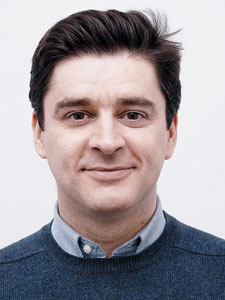 Tiago V. Maia
Tiago V. Maia
University of Lisbon, Portugal, and Columbia University
http://childpsych.columbia.edu/brainimaging/CV_maia.html
What does your research focus on?
In terms of psychological processes, I am interested in automatic behaviors, such as habits, and emotional responses, such as fear, with an emphasis on how such behaviors and responses are learned and can be unlearned. In terms of brain function, I am interested in the structures that subserve and modulate these psychological processes, especially the basal ganglia, prefrontal cortex, amygdala, and neuromodulatory systems. My research program also includes a substantial translational component that investigates three disorders that involve disturbances in these processes and neural substrates: Tourette syndrome, obsessive-compulsive disorder, and attention-deficit/hyperactivity disorder. I investigate these topics using a combination of neurocomputational modeling, brain imaging (especially fMRI), and behavioral experimentation.
What drew you to this line of research and why is it exciting to you?
I highly value the role of good, formal theories to understand the brain and behavior, and there are excellent computational theories of learning, so investigating topics related to learning was a natural choice for me. During the course of my PhD, I became fascinated by the ability of relatively simple mathematical/computational learning theories to provide unified explanations for large bodies of psychological and neuroscientific findings. I also realized that those theories could be applied to understanding what is going on in psychopathology, and that has perhaps been the most exciting and rewarding aspect of this work. The hope of having a direct, meaningful impact in improving the lives of the millions of people who suffer every day with the disorders that I study is a powerful motivator indeed!
Who were/are your mentors or scientific influences?
I learned a tremendous amount about both good science and the role of modeling in psychology and neuroscience from my PhD advisor, James McClelland. I learned a great deal about brain imaging and psychiatric disorders from my postdoctoral advisor, Bradley Peterson. I have also had many wonderfully stimulating and informative interactions with Michael Frank about models of the basal ganglia and computational psychiatry more generally. Other salient scientific influences include Jonathan Cohen, who was doing computational psychiatry before almost anyone else was talking about it, and Peter Dayan, who has had a leading role in the application of reinforcement learning to psychology and neuroscience.
I also admire the work that was done in the middle of the 20th century translating learning principles investigated in experimental-psychology labs to clinical applications. Such work led to the development of important treatments (e.g., exposure and response prevention) that were strongly grounded in experimental and theoretical basic-science work. Unfortunately, the research agendas of experimental and clinical psychology labs subsequently started to diverge (with, for example, cognitive therapy having little, if any, grounding in research in cognitive psychology). I hope that my work can help to reverse that trend, bringing back a tight integration of basic science and clinical applications — but now with the addition of formal models and an integrated understanding of brain and behavior.
What’s your future research agenda?
We have just started to scratch the surface of an immense well of opportunities for computational models to provide new insights into psychiatric disorders. I hope that my work, together with the work of others who are pursuing similar approaches, will contribute to firmly establish computational psychiatry as a novel, paradigm-shifting approach to studying the neurobehavioral bases of psychiatric disorders — one built on close interactions between empirical work and formal theories. But the real “prize” would be to be able to show that this approach can lead to clinically meaningful advances. Admittedly, these are ambitious objectives, but they are my long-term vision. If they are successful, they could radically change research in psychiatry as we know it.
What publication are you most proud of?
I will exhibit a bit of a recency effect and select the following:
Maia, T. V., & Frank, M. J. (2011). From reinforcement learning models to psychiatric and neurological disorders. Nature Neuroscience, 14, 154–162.
This article seeks to demonstrate how a small set of computational reinforcement-learning principles can explain a broad range of neurobehavioral findings in several psychiatric and neurological disorders, and as such it illustrates the kind of integrative and unifying theorizing that I find most appealing. We are fortunate to live in an age where the number of scientists and studies in any given topic is extremely large, but the result of this collective effort sometimes seems like a patchwork of somewhat disjointed empirical findings. We need formal theories in psychology, neuroscience, and psychiatry that can bring “order” into this apparent chaos. This article tries to illustrate how that is now within our reach and can lead to new insights into psychiatric and neurological disorders. Return to top.
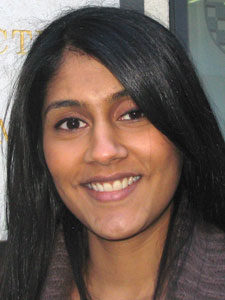 Esha Massand
Esha Massand
Birkbeck, University of London
www.bbk.ac.uk/psychology/
What does your research focus on?
My research focuses on neurodevelopmental disorders such as Autism Spectrum Disorder (ASD) and Down’s syndrome. I am interested in the impact of these disorders on developmental trajectories, particularly as it concerns cognitive abilities. In my research on ASD I have shown that even when overt behaviours are similar to typically developing controls, those with ASD display different underlying brain processes. In my most recent research, I have started to investigate the links between Down’s syndrome and Alzheimer’s disease. I will approach this topic with teams of geneticists, psychiatrists, and neuroscientists to answer our questions about the over-expression of the APP gene on chromosome 21, individual differences in the development of learning disabilities in infants and children with Down’s syndrome, the processes involved in cognitive decline with aging, and the relationship between Down’s syndrome and Alzheimer’s disease — including the identification of risk markers and preventative treatment.
What drew you to this line of research and why is it exciting to you?
I have always been intrigued by human development, cognition, learning, and memory. Research focused on atypical development is particularly exciting as it provides a perspective in which to understand not only the disorder, but also typical development. I am drawn into this line of research because of its potential to identify early risk markers for these individuals, and the possibility to develop very early interventions in infancy to channel their development closer to the typical trajectory.
Who were/are your mentors or scientific influences?
I have been fortunate to have had excellent mentors throughout my PhD and postdoctoral training. I completed my PhD under the supervision of Dermot Bowler at City University London. Professor Bowler inspired me to be daring in my choice of experimental methodology. He taught me the highest standard of scientific methodology and ensured there were excellent training opportunities to enhance the breadth of my knowledge and skills during my PhD. Part of this training included an international exchange in Montreal, Canada, where I was taught to use electrophysiology by Boutheina Jemel at the Hôpital Rivière-des-Prairies (Montreal, 2007). Dr. Jemel continued to inspire me with her use of detailed and sophisticated research methodology and data analysis to tackle important research questions. Following completion of my thesis, I moved to Seattle, Washington, to continue my training in electrophysiology as a Postdoctoral Fellow at the Center on Human Development and Disability with Sara Webb. Dr. Webb provided excellent, gentle guidance and mentorship for me to complete a program of research with multiple age cohorts of individuals with autism. Dr. Webb has taught me the importance of proficiency of interactions with different contributing disciplines in large-scale studies.
I am exceptionally enthusiastic about the current phase of my career and my current mentor, Annette Karmiloff-Smith at the Centre on Brain and Cognitive Development, Birkbeck, University of London. This experience is truly a dream come true, and I am very grateful to have excellent mentors that have provided exciting collaborations and are strong aspirational role models.
What’s your future research agenda?
I am currently working at the Centre on Brain and Cognitive Development, Birkbeck, University of London, on a project that aims to help us better understand the links between Down’s syndrome and Alzheimer’s disease. Because of their brain pathology of plaques and tangles, people with Down’s syndrome are much more likely than the general population to develop Alzheimer’s disease, yet only 50% go on to display clinical symptoms. So we are aiming to discover both the risk and protective factors. I am collaborating with teams of geneticists, psychiatrists and neuroscientists at UCL’s Institute of Neurology, the Blizard Institute at Queen Mary, University of London, and the National Institute for Medical Research (NIMR) to answer questions such as: What are the very early signs of learning disabilities in infants with Down’s syndrome and how do they develop?; What are the processes involved with the cognitive decline that occurs with age in Down’s syndrome?; Why do some people with Down’s syndrome go on to get dementia and others do not, despite having Alzheimer’s brain pathology? We are looking for markers that can identify people with Down’s syndrome who will go on to develop dementia, to identify both risk and protective markers during infancy and target preventative treatment. We hope our insights will lead to novel treatments for early Alzheimer’s diagnosis, and intervention/ treatments that will benefit those people diagnosed with Down’s, as well as the general population. Together with the other labs listed above, we will enhance our understanding of the relationship between Down’s syndrome and Alzheimer’s disease by incorporating large age cohorts and integrating current understanding within research domains such as human cognitive development, aging, neurobiology, genetics, and cellular modeling. We will also use mouse models to address important research questions.
What publication are you most proud of?
I am very proud of my most recent article in the Journal of Autism and Developmental Disorders entitled, “ERP Correlates of Recognition Memory in Autism Spectrum Disorder” (in press; DOI: 10.1007/s10803-012-1755-x: PMID 23307419). It was the first study to use event-related potentials (ERPs) to enhance our understanding of well-established memory atypicalities in high-functioning adults with ASD and contributes to our understanding of brain-behavior relations in this condition. Return to top.
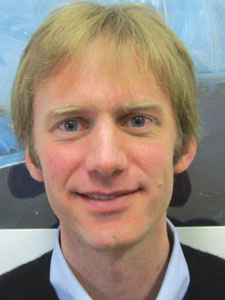 Robin Nusslock
Robin Nusslock
Northwestern University
http://mdl.psych.northwestern.edu/index.html
What does your research focus on?
My research focuses on examining abnormalities in reward-processing and reward-related brain function in mood disorders such as depression and bipolar disorder using multi-modal techniques involving psychosocial indices, neurophysiology (electroencephalography; event-related potentials), and neuroimaging (fMRI). My colleagues and I propose that risk for bipolar disorder involves a hypersensitivity to cues of possible reward which can lead to excessive goal-directed motivation in response to rewarding stimuli (i.e., mania). By contrast, we and others have demonstrated that risk for unipolar depression (with no history of mania) is characterized by a reduced sensitivity to rewarding stimuli.
What drew you to this line of research and why is it exciting to you?
I would say that before I was a scientist, I was a philosopher. I have always had a deep interest in the workings of mind and the nature of human emotion. What drew me to psychological science, however, is the ability to examine these ancient questions using modern methodologies and technology. I was further drawn to the study of depression and bipolar disorder in order to better understand what occurs when normal emotional processes become dysregulated. An overarching goal of my work is to try to help minimize the suffering of individuals struggling with emotional disorders. I feel privileged to have a career focused on examining one of the great complexities in the universe: the human mind.
Who were/are your mentors or scientific influences?
One of the great joys for me in training as an academic psychologist has been the opportunity to work with truly phenomenal mentors. It was through my work as an undergraduate research assistant in Richard Davidson’s Affective Neuroscience Laboratory at the University of Wisconsin–Madison that I was first exposed the scientific investigation of the mind. During graduate school I had the pleasure of being mentored by Lyn Abramson at the University of Wisconsin–Madison, and working closely with Lauren Alloy at Temple University. Lyn and Lauren have likely had the greatest impact on teaching me to think as a psychological scientist. During my postdoctoral training at the University of Pittsburgh, I had the pleasure of working with Mary Phillips and Ellen Frank, both of whom have had a huge effect on my professional development. I have tremendous gratitude for my academic mentors, as well as my current colleagues at Northwestern University who provide me with wonderful professional counsel.
What’s your future research agenda?
There are three future directions to my research on abnormalities in reward-processing in mood disorders. First, I am interested in moving beyond examining the neurobiology of depression and bipolar disorder as homogenous illnesses, and am instead interested in identifying specific psychobiological pathways to specific symptom profiles. Second, I intend to add a self-regulatory perspective to my research by examining whether individuals with a mood disorder have difficulty disengaging from rewarding or emotionally salient stimuli. Lastly, I am interested in examining whether abnormalities in reward-related brain function can serve as biological markers to establish differential risk for mood versus anxiety disorders.
What publication are you most proud of?
Nusslock, R., Almeida, J. R. C., Forbes, E. E., Versace, A., LaBarbara, E. J., Klein, C. R., & Phillips, M. L. (2012). Waiting to win: Elevated striatal and orbitofrontal cortical activity during reward anticipation in euthymic bipolar adults. Bipolar Disorders, 14, 249–260.
The publication I am most proud of is a paper that I have with Mary Phillips, my post-doctoral mentor, in which we used fMRI to examine reward-related brain function in individuals with bipolar disorder. This is one of the first studies to demonstrate that individuals with bipolar disorder display a hypersensitivity to rewarding stimuli at the neural level. We propose that this hypersensitivity may be a mechanism for understanding mania among individuals with bipolar disorder. That is, in the face of possible rewards, individuals with bipolar disorder may experience an excessive increase in positive and reward-related emotions which, in the extreme, may be reflected in manic symptoms. Return to top.
 In-Sue Oh
In-Sue Oh
Temple University
www.fox.temple.edu/mcm_people/in-sue-oh/
What does your research focus on?
My current research interests center on the roles of various individual differences (e.g., personality, cognitive ability, work experiences) in predicting and explaining important work outcomes (e.g., work attitudes and job performance). In addition, I am interested in developing and refining meta-analytic methods to synthesize primary studies (first-order meta-analysis) as well as first order meta-analytic studies (second-order meta-analysis, overview of reviews) in order to best estimate construct-level relationships, along with detecting and adjusting for publication bias, a serious threat to the validity of meta-analytic results.
What drew you to this line of research and why is it exciting to you?
My interest in individual differences started with two graduate seminar courses taught by Frank Schmidt and David Watson that I took as a doctoral student at the University of Iowa and with several research projects on the relationships of personality and intelligence with job performance that I worked on with Frank Schmidt and Mick Mount. They allowed me to understand that individual differences (e.g., personality, cognitive ability, values, and experiences) are one of the most interesting and important factors of human behavior across many domains of life including work. Individual differences are exciting and interesting to examine because they provide great insights into how we are all alike and how we are all different. Individual differences are important to examine because they answer why we do what we do. More importantly, individual differences do predict work outcomes across situations and over time.
Who were/are your mentors or scientific influences?
Dr. Frank Schmidt, Professor Emeritus at the University of Iowa has been my best mentor over the years. As all people who know him agree, Dr. Schmidt is not only scary smart but also highly conscientious, which in fact forms the scientifically established best combination among all possible pairs of individual differences for career success. Indeed, he has made substantial, important research contributions to the advancement of the fields of industrial and organizational (I/O) psychology, human resources management (HRM), and research methods. He has published over 100 papers in very selective top-tier journals alone, and his work has been cited over 20,000 times. He also maintains very good relationships with his former students, including me. For example, he often forwards recently written or important journal articles and other documents to his former and current students with similar research interests to let them share opinions and learn new things. Thus, his former students keep in touch with him and respect him for his endless help and mentoring.
What’s your future research agenda?
I would like to expand my current research on the relationships among individual differences and important work outcomes by examining less examined yet important individual differences (e.g., fit, values, interests) and work outcomes (e.g., psychological and physical health) and by considering the moderating effect of cultural differences on the relationships.
What publication are you most proud of?
Oh, I.-S., Wang, G., & Mount, M. K. (2011). Validity of observer ratings of the Five-Factor Model of personality: A meta-analysis. Journal of Applied Psychology, 96, 762–773.
In this recent meta-analytic study, my coauthors and I have found that the validity of personality traits for job performance can increase if we measure personality using observer ratings (reputation) instead of self-reports (self-identity). Return to top.
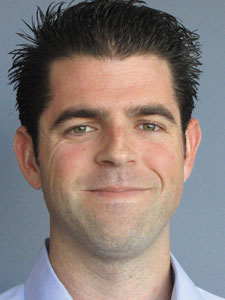 Nicholas Scurich
Nicholas Scurich
University of California, Irvine
http://socialecology.uci.edu/faculty/nscurich
What does your research focus on?
Broadly speaking, I study psychology and law. The general theme of my research is judgment and decision making in the legal system. I also study violence risk assessment and risk communication.
What drew you to this line of research and why is it exciting to you?
One person in particular drew me to this area of research. As an undergraduate majoring in physics, I took an elective course entitled Law and Psychology, which was taught by Tom Lyon (University of Southern California), a law professor/psychologist. By the third lecture, I had changed my major to Psychology. I was enthralled. Tom is one of the few people for whom the aphorism “best teacher ever” is not hyperbole, and it is undoubtedly his erudition that initially drew me to the field.
In general, I find this area fascinating because the science and its social implications are so deeply entwined. The prospect of using science to inform and improve the quality of the legal system is encouraging, though this interrelatedness can be a double-edge sword because it tends to encourage research that is atheoretical. I try to ensure that my own research, even if it is motivated by an existing social problem, is theory driven, and, to the greatest extent possible, “objective” in the sense that it’s not pushing an agenda.
Who were/are your mentors or scientific influences?
It would be impossible to overstate the contribution of Richard S. John to my accomplishments. John, who was my undergraduate and graduate advisor, always furnished superb guidance on conducting behavioral research, and I am most grateful for his introduction to the fascinating world of Bayesianism. I was also fortunate to work closely with three extraordinary law professors, Dan Simon, Tom Lyon, and Ellen Saks, each of whom generously shared their insight and wisdom. My research has greatly benefited from this eclectic upbringing.
Two other psychologists have been highly influential to me. The first is Paul Meehl, who I believe is one of the most important psychologists of the 20th Century. Every student of psychology ought to read at least some of his work; his APS Cattell award speech on “The Power of Quantitative Thinking” is highly recommended. From a substantive standpoint, John Monahan’s scholarship has had the greatest influence on my own research program. His seminal work on risk assessment is a paragon of interdisciplinary research.
What’s your future research agenda?
Although I have several ongoing projects, I’m especially excited about my collaborative research with Dan Simon, which examines how the lay public reacts to judicial decisions and the unique style of argumentation that accompanies them. This line of research seeks to understand the psychological dynamics that distort the perception of the law’s neutrality, and how legal decision makers might counteract such dynamics.
What publication are you most proud of?
Scurich, N., & Krauss, D. A. (2013). The effect of adjusted actuarial risk assessment on mock-jurors’ decisions in a sexual predator commitment proceeding. Jurimetrics Journal, 53(4).
Perhaps it’s a recency effect, but this paper is a new favorite because it touches on several areas of psychology. It primarily addresses a practice that is germane to forensic psychology (i.e., adjusting actuarial risk estimates), however it also replicates the social psychological theory of Motivated Reasoning in a novel context, and it has implications for the legal admissibility of expert testimony. Return to top.
 Nikolaus Steinbeis
Nikolaus Steinbeis
Max Planck Institute for Human Cognitive and Brain Sciences
www.cbs.mpg.de/staff/steinb-10018
What does your research focus on?
I am a developmental psychologist and neuroscientist with a focus on social and affective processes, decisions, and abilities. Using neuroimaging techniques I try to characterize the structural and functional brain changes occurring during childhood and adolescence. I then use this information to see how it can account for the observed changes in social behavior and affective experience by means of paradigms derived in part from economic game theory and social psychology.
What drew you to this line of research and why is it exciting to you?
I was drawn to this research because I felt the related questions to be important not only to psychology and cognitive neuroscience, but also beyond the field of academia. To me the study of child development constitutes an incredibly exciting intersection between addressing issues that have occupied Western thought for thousands of years and the potential to inform issues that are topical to contemporary society.
Who were/are your mentors or scientific influences?
There are a whole range of scientists that have influenced me on the way, some directly and others vicariously. Being taught by Henry Plotkin and Celia Heyes at University College London was hugely inspiring. The simultaneous display of scientific rigor and creativity was what ultimately drew me into academia. Mireille Besson taught me to stay open when looking at scientific problems and Stefan Koelsch how to persevere with an idea. I am still very much influenced by my current mentor and main collaborator Tania Singer. Her natural curiosity and determination to get to the bottom of things coupled with ingenuity and scientific vision is pretty staggering.
What’s your future research agenda?
I want to take a closer look at exactly which unique and composite aspects of functional and structural brain development give rise to the emergence of and changes in social behavior, like empathic helping or the decision to share. The study of brain development has made great leaps, and the paradigms we use to study the development of social behavior have become increasingly sophisticated. There is so much potential in combining these fields of study. My mid- to long-term agenda is to look into the nature and operation of critical periods in social development during infancy, childhood, and adolescence.
What publication are you most proud of?
Steinbeis, N., Bernhardt, B. C., & Singer, T. (2012). Impulse control and underlying functions of the left DLPFC mediate age-related and age-independent individual differences in strategic social behavior. Neuron, 73, 1040–1051.
I think this paper manages to successfully integrate a very rich and complex dataset to tell a coherent and convincing story about the role of impulse control and brain development in the development of strategic social behavior. What struck me was the convergence with which left DLPFC structure and function seem to be involved in bringing about strategic decisions in children and adults. Return to top.
 Virginia Sturm
Virginia Sturm
University of California, San Francisco
canlab.ucsf.edu
What does your research focus on?
My research focuses on how neural systems support emotion and how disruption in these systems relates to alterations in emotion and empathy. I use a laboratory-based approach to measure emotional physiology, behavior, and experience in patients with neurodegenerative disease. In addition, I examine the neural correlates of emotional responding by relating laboratory indices of emotion to neuroimaging measures. The primary goal of my work is to expand our understanding of the association between neural dysfunction and emotional symptoms in neurologic and psychiatric disorders.
What drew you to this line of research and why is it exciting to you?
Before graduate school I worked as a research assistant and had the opportunity to work with patients with frontotemporal dementia, a neurodegenerative disease characterized by profound impairment in social behavior. This disease fascinated me because patients lose interest in maintaining their close relationships and behave in ways that break social norms (despite having relative preservation of cognition). Understanding how degeneration of specific neural systems gives rise to emotional and social deficits in frontotemporal dementia continues to be a focus of my work because there are still many unanswered questions about how the brain supports the complexities of everyday human interaction. Affective neuroscience is an exciting area of research because it is inherently interdisciplinary and requires integration of multiple lines of theories and data, a challenge that I enjoy.
Who were/are your mentors or scientific influences?
I have been very lucky to work with a number of talented, creative, and supportive mentors. Robert Levenson was my graduate advisor. He taught me how to think critically about psychological phenomena, how to deconstruct these phenomena into their component parts, and how to design rigorous studies to test my hypotheses. Bruce Miller introduced me to neurodegenerative disease and showed me the power of examining brain-behavior relationships through his incisive clinical judgment and astute understanding of the human condition. William Seeley has inspired me to question the dogma and to integrate detailed neuroanatomical systems into emotional theory. Howard Rosen has been instrumental in my transition to an independent investigator through his endless support and encouragement. Joel Kramer gave me a chance at my first job as a research assistant and continues to support my career development by challenging me to stand by my opinions and to articulate them clearly.
What’s your future research agenda?
In my future studies, I will continue to examine how emotions change in frontotemporal dementia and other forms of dementia such as Alzheimer’s disease. Understanding how biological alterations in the neural systems dedicated to emotion detection and generation relate to affective symptomatology is one of my primary goals. In upcoming years, I also plan to expand my work to examine emotion in psychiatric disorders. I hope that my studies of socioemotional behavior in neurodegenerative disease will help to shed light on the neural mechanisms that give rise to similar symptoms in psychiatric illness.
What publication are you most proud of?
Sturm, V. E., Levenson, R. W., Rosen, H. J., Allison, S. C., & Miller, B. L. (2006). Self-conscious emotion deficits in frontotemporal lobar degeneration. Brain, 129, 2508–2516.
Although social impairment is a hallmark feature of frontotemporal dementia, the reasons for patients’ social decline is not well understood. In this study, we examined self-conscious emotions (i.e., embarrassment) because they are important for regulation of social behavior. We hypothesized that self-conscious emotions may be especially vulnerable in frontotemporal dementia because they are socially complex and depend upon brain regions that are hard-hit in this disease. This study led to my first publication and confirmed my dedication to interdisciplinary investigations. Return to top.
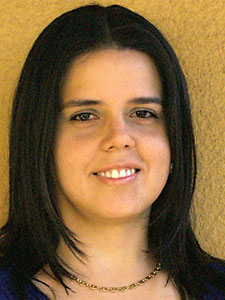 Marcela Tenorio D.
Marcela Tenorio D.
Pontificia Universidad Católica de Chile
www.cedeti.cl
What does your research focus on?
My primary interests are in cognitive development across the lifespan and how to develop proper instruments to assess cognitive trajectories. My current research focuses on the development of “covert assessment” as a new method for cognitive evaluation. I am looking for a new theoretical model to justify games and technology as a better way to explore cognitive function in typical and atypical development. My hypothesis is that it is possible to assess cognitive functions without full awareness of the task.
For this purpose, I am working within an interdisciplinary team, including software engineers, mathematicians, graphic designers, basic schoolteachers, cognitive psychologists and neuropsychologists. We are developing iPad games that allow exploration of cognitive functions and learning precursors in children from three to 10 years old. As a product of this experience, we presented TENI (Battery for neuropsychology evaluation in children) and dip (Test to explore learning precursors). Both tests have been standardized for the Chilean population.
What drew you to this line of research and why is it exciting to you?
Since attending Psychology school at the Universidad de los Andes (Bogotá, Colombia), I have felt a special fascination for cognitive processes and human development. I found that cognitive assessment, as a way to help people with clinical problems, could be useful and powerful in a practical field. However, in Latin America we have shortcomings in terms of an ethical and rigorous assessment of cognitive development. We have few professionals with a specific background in this area, and we do not have appropriate instruments. So, I moved to United States for clinical practice in neuropsychology, and then I decided to begin Doctoral training as a way to contribute with research.
At Pontificia Universidad Católica in Chile, I found time to invest effort, neurons, and hard work in gaining a better understanding of human development and how we can use standardized measurements to analyze typical and atypical trajectories. But I also discovered the potential of games and technology to create alternative forms of cognitive assessment.
At the end of my Doctoral training I was very lucky because I had the opportunity to lead the national standardization of the Wechsler Intelligence Scale for Adults — latest edition, and to be part of the research team that is looking to incorporate games and technology into this field.
I feel that we are crossing frontiers in cognitive assessment. This is exciting for me; I feel like a crewmember of the Enterprise.
Who were/are your mentors or scientific influences?
I was very strongly influence during the first years of my career by Jorge Larreamendy-Joerns and Elena Marulanda. Jorge introduced me to formal research, methodology, and scientific thinking. Elena showed me the importance of being kind and supportive with my patients and their families.
My most important influence during my doctoral years came from Ricardo Rosas. He lives according to a dictum from Alice in Wonderland: “The adventures first, explanations take such a dreadful time”. He encouraged me to be creative and risky, to enjoy new and crazy ideas, and to move one step beyond mainstream.
Last but not the least, I am influenced by Annette Karmiloff-Smith. I became familiar with her work during my formative years, and now I have the opportunity to collaborate with her in my research. Annette changed the way we think about human development, and I learned from her the importance of being enthusiastic about theory.
What’s your future research agenda?
I am working on a two-year project funded by the Chilean government’s Fondo Nacional de Ciencia y Tecnología (FONDECYT) and by the British Academy of Science. My main goal is to explore the use of iPad games for cognitive characterization of children with neurodevelopmental disorders. I am working with 3- to 15-year-old patients with Down’s, Williams, and Fragile X Syndromes. My main challenge is to develop proper instruments for cognitive assessment in these populations. During the next year, I will work in collaboration with researchers from Birkbeck, University of London, to test our instruments in children with atypical trajectories of development.
I am particularly interested in impacting public policy in Chile with this research. I think that these children and their families need attention, health resources, and good educational opportunities.
What publication are you most proud of?
Rosas, R., Ceric, F., Tenorio, M., Mourges, C., Thibaut, C., Aravena, M.T., & Hurtado, E. (2010). ADHD children outperform normal children in an artificial grammar implicit learning task: ERP and RT evidence. Consciousness and Cognition, 19, 341–351.
I feel proud of this team publication. It was our first effort to use multi-level dimensions for cognitive analysis in clinical population. Return to top.
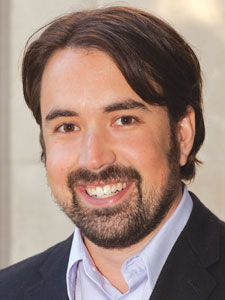 Nicholas Turk-Browne
Nicholas Turk-Browne
Princeton University
www.princeton.edu/ntblab
What does your research focus on?
The research in my lab seeks to understand key components of cognition, such as perception and memory. These components are often studied in isolation, with a risk of missing the forest for the trees. The overarching theme of our work is that cognitive processes are inherently interactive — and that studying their behavioral and neural interactions can be especially informative. We investigate learning mechanisms such as “statistical learning” that transform perceptual experience into memory, and attentional mechanisms such as “background connectivity” that regulate this transformation.
What drew you to this line of research and why is it exciting to you?
Perception feels effortless but is actually the product of sophisticated processes operating under the surface. Indeed, accurately perceiving the world requires coping with: jarring input across eye movements, sensory information that is ambiguous, and woeful capacity limitations in attention. Although memory can feel effortful — such as when studying for a test or recalling a name — I am inspired by the idea that complex processes similarly shape memory under the surface. I suspect that such automatic and implicit processes influence memory much more than we yet realize.
Who were/are your mentors or scientific influences?
I am grateful to have had several amazing mentors. As an undergraduate at the University of Toronto, Jay Pratt and later Gus Craik awakened my interests and gave me a taste for research. In graduate school at Yale University, my co-advisors — and enduring intellectual heroes — Marvin Chun and Brian Scholl were incredibly generous, encouraging, and wise; I was also very fortunate to have the opportunity to learn from Marcia Johnson and Greg McCarthy. Finally, as an assistant professor at Princeton University, I am surrounded by many nurturing and inspiring colleagues.
What’s your future research agenda?
My students and postdocs are pursuing a range of exciting questions — here are a few examples: How do different memory systems guide attention? What are the consequences of implicit prediction for perception and memory? What is the role of the hippocampus, and medial temporal lobe more broadly, in the visual processing hierarchy? How does attention restructure functional brain networks to prioritize goal-relevant information? How can real-time fMRI be used to train attention-related behavior?
What publication are you most proud of?
A major focus of the lab has been to characterize the nature of statistical learning — the extraction of regularities in how objects co-occur over space and time, in the service of building representations of words, events, and scenes. We recently discovered that such learning has surprising consequences for other cognitive processes. Namely, an upcoming paper reports that statistical learning automatically controls attention, prioritizing locations and features containing regularities:
Zhao, J., Al-Aidroos, N., & Turk-Browne, N. B. (in press). Attention is spontaneously biased toward regularities. Psychological Science.

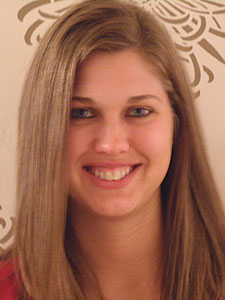




APS regularly opens certain online articles for discussion on our website. Effective February 2021, you must be a logged-in APS member to post comments. By posting a comment, you agree to our Community Guidelines and the display of your profile information, including your name and affiliation. Any opinions, findings, conclusions, or recommendations present in article comments are those of the writers and do not necessarily reflect the views of APS or the article’s author. For more information, please see our Community Guidelines.
Please login with your APS account to comment.